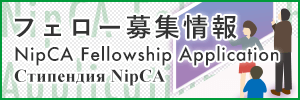Zakaryanov Ilyas
Introduction
When visiting the Sapporo station in Hokkaido, it is possible to notice a monument of an ancient long-bearded man, dressed in some national clothes and armed with a bow and arrows. This “ancient” man is quite different from “ancient” Japanese, both in terms of appearance and clothes style. The monument stands for Ainu – indigenous people of Japan and Hokkaido – is historical territory of the Ainu.


The origin
The origin of the Ainu is still not known for certain. However, from the publicly available sources on the Internet, there are three hypotheses of the Ainu’s origin. First one offers that Ainu originated from the ancient population of Siberia. Second version suggests an ancient kinship with the European race. Third version is based on the view that Ainu have Australoid origin. Among other versions, it is interesting to notice that one genetic study took in 2012, identified Ryukyuan and Ainu people as close relatives (Suzuki, 2012). This is a very interesting claim, especially in the light of the recent trip of our group to Okinawa, whose indigenous people are Ryukyuan. Nevertheless, the topic of Ainu’s origin remains a hot theme for discussion.
The life style, culture and traditions
Turning to life, culture and traditions of the Ainu, again everything was very different from Japanese culture. The houses where Ainu lived were called cise (Ainu language). Those cise were built of durable and hard-to decay natural materials such as woods and grasses. The Ainu used chestnuts and oaks for pillars and alders for joists and beams.
The Ainu people had a variety of clothes. Moreover the kind of clothes depended on for what events it was put on. For example most of beautiful ornamented clothes that can be seen at museums today, were dresses for rituals. Headbands, earrings and necklaces were integral part of ritual clothes. In daily life, when walked around the mountains or worked, the Ainu used the ordinary daily clothes.
From the basic activities there were hunting, fishing and plant gathering. If believe to the sources, the Ainu never dealt with farming. They hunted wild animals and gathered wild plants for food. Moreover it is interesting to notice that food was believed as something blessed by the Gods of Nature and that is why the Ainu acquired it only as needed.
This have a relation to the Ainu’s believes. They believed that the spirits are everywhere from natural phenomena to animals and plants, and even to human-made instruments. The spirits may not only bring benefit to human beings but also harm, for example in the form of natural disasters and diseases. In this regard Ainu people respected those spirits as “gods” and believed in their essential to human beings. Thus, humans can enjoy their peaceful daily lives only when gods protect them and provide food to them. In order to continue such life, the Ainu people pray to gods. Praying to gods involves a variety of rituals. A leading one was called “iomante”. The Iomante is a ritual to send back the spirits of animal gods.
The Ainu’s language deserves special attention. As it can be understood it is also very different from Japanese one. Although the word order is similar, vocabularies are quite different. A significant cultural phenomenon of the Ainu people is their lack of written language. The history of one’s own people and other important information over the centuries has been passed from mouth to mouth. As the consequence, this phenomena found its reflection in an exceptionally rich folklore of the Ainu.
The struggle with invaders, extermination and nowadays situation of the Ainu
Being a brave warlike people, the Ainu developed very difficult relations with the ancient ancestors of the Japanese, who began to settle on the Japanese islands in the middle of the Dzemon era. As a result, some Ainu were forced to migrate to Sakhalin, Amur and the Kuril Islands. By the time the statehood had developed among the Japanese, the fierce bloody struggle of the Ainu and the Japanese began. There are two significant revolts usually underlined by the historians – the revolts of Atheruy and Syagusyain. Falling into obedience to the ancient Japanese, the Ainu were deprived of their usual way of life and were doomed to slave labor. As a result, many Ainu quickly died, which led to a huge reduction in their numbers and the almost complete extinction of culture.
Today, the Japanese government has recognized the Ainu as the indigenous people of Japan at the legislative level and is calling for a “farsighted policy,” including measures to support communities and develop local economies and tourism. According to a 2017 survey (Japan Times, 2019) the Ainu population is at least 12,300, but the real figure remains unknown, since many of them integrated into the main society, and some hid their cultural roots. Moreover, modern Ainu almost do not speak on their native language. Together with the lack of written language, it means that culture and traditions of those wonderful ancient people may be lost forever. However with the hope on Japanese government and its wise politics there is an opportunity to save this national treasure of the region.
References:
Ainu Culture and the Ainu People. (n.d.). Retrieved from https://www.akanainu.jp/en/culture-people.
Japan Times. (2019). Japan to recognize indigenous Ainu people for first time. Retrieved from https://www.japantimes.co.jp/news/2019/02/15/national/japan-recognize-indigenous-ainu-people-first-time/#.XhgTPEf7SUk.
Suzuki, Y. (2012). “Ryukyuan, Ainu People Genetically Similar”. Retrieved from: https://www.asianscientist.com/2012/12/in-the-lab/ryukyuan-ainu-people-genetically-similar-2012/ Yurtoğlu, N. (2018). History Studies International Journal of History, 10(7), 241–264. Retrieved from: http://www.historystudies.net/dergi//birinci-dunya-savasinda-bir-asayis-sorunu-sebinkarahisar-ermeni-isyani20181092a4a8f.pdf.



